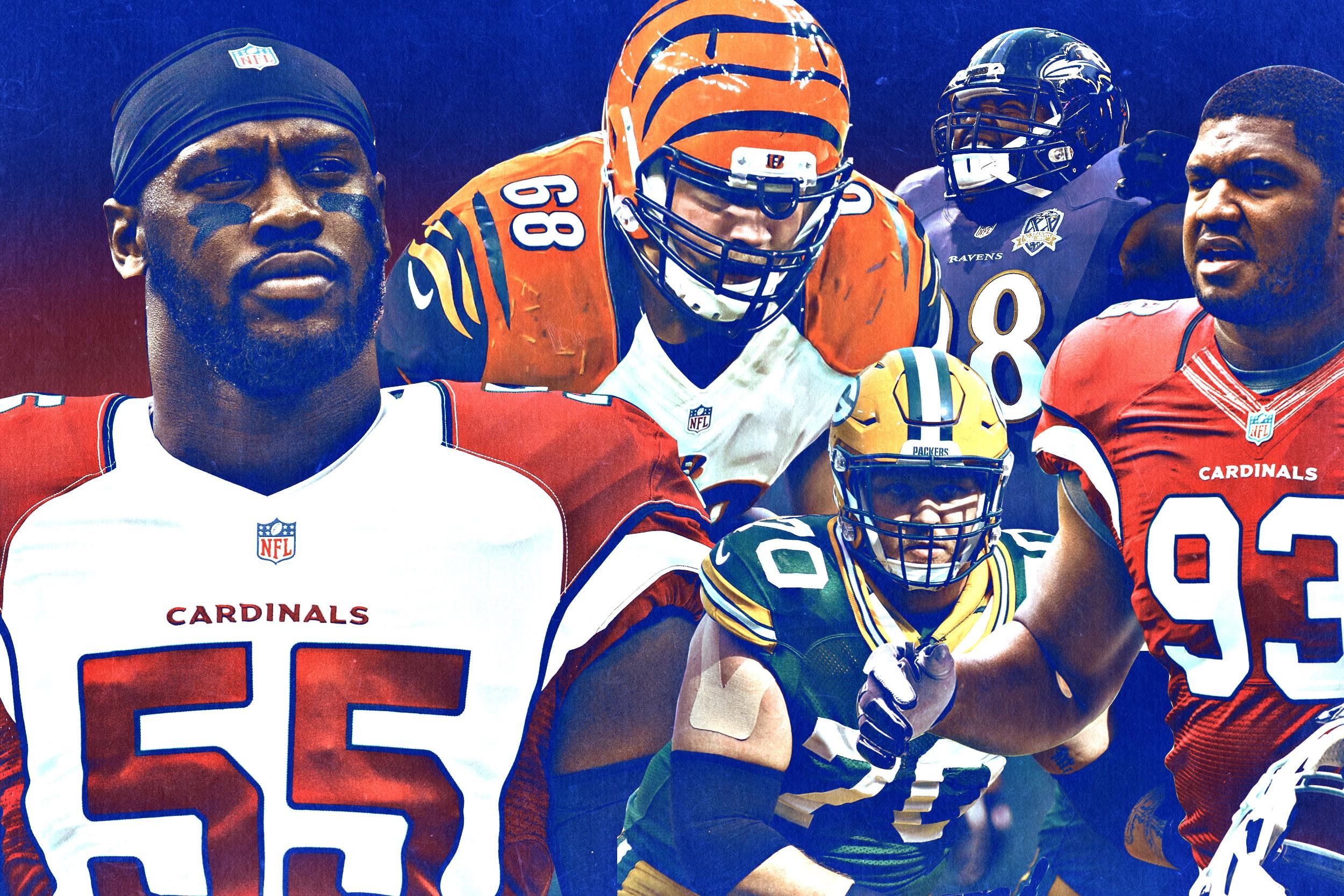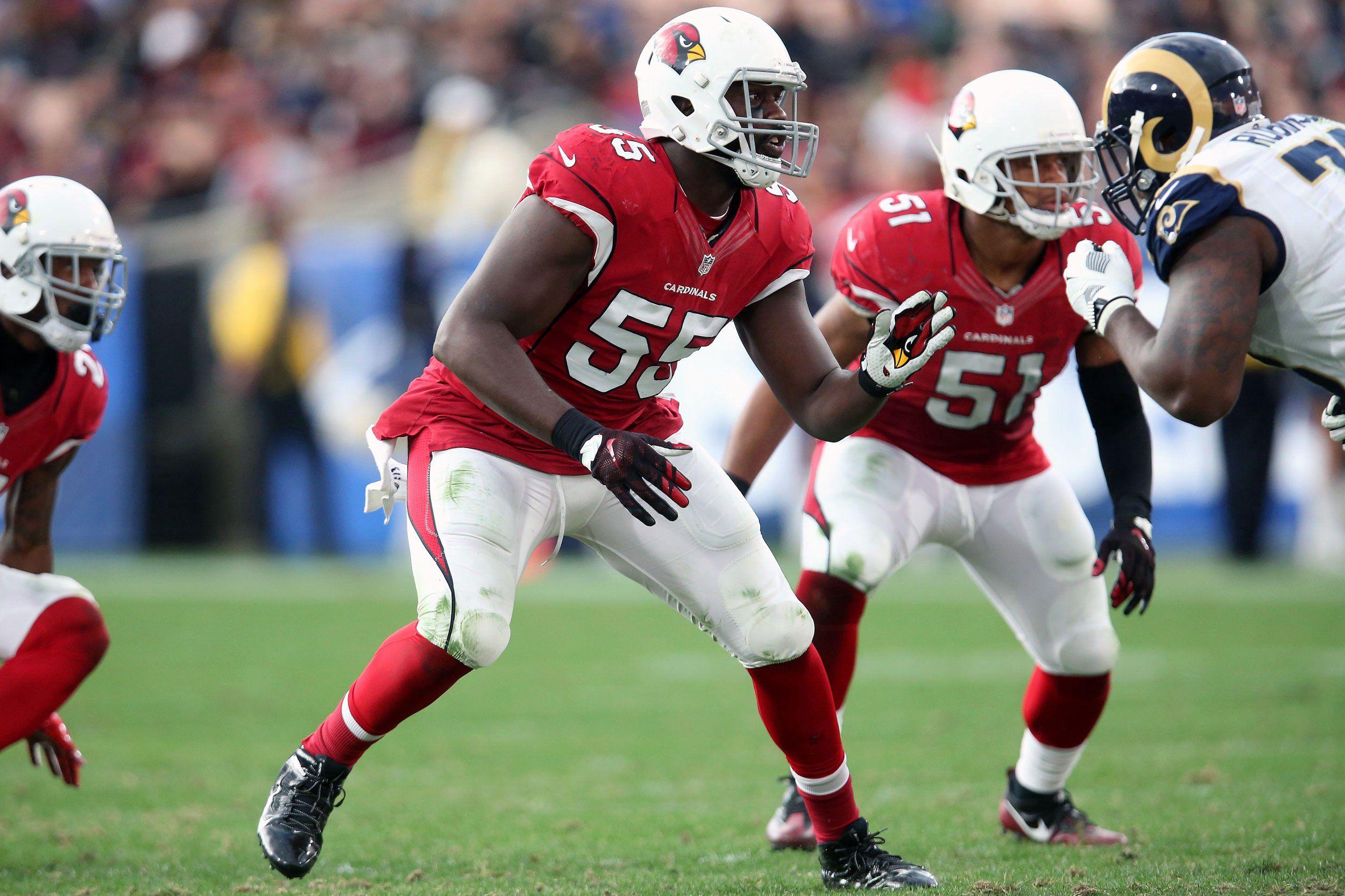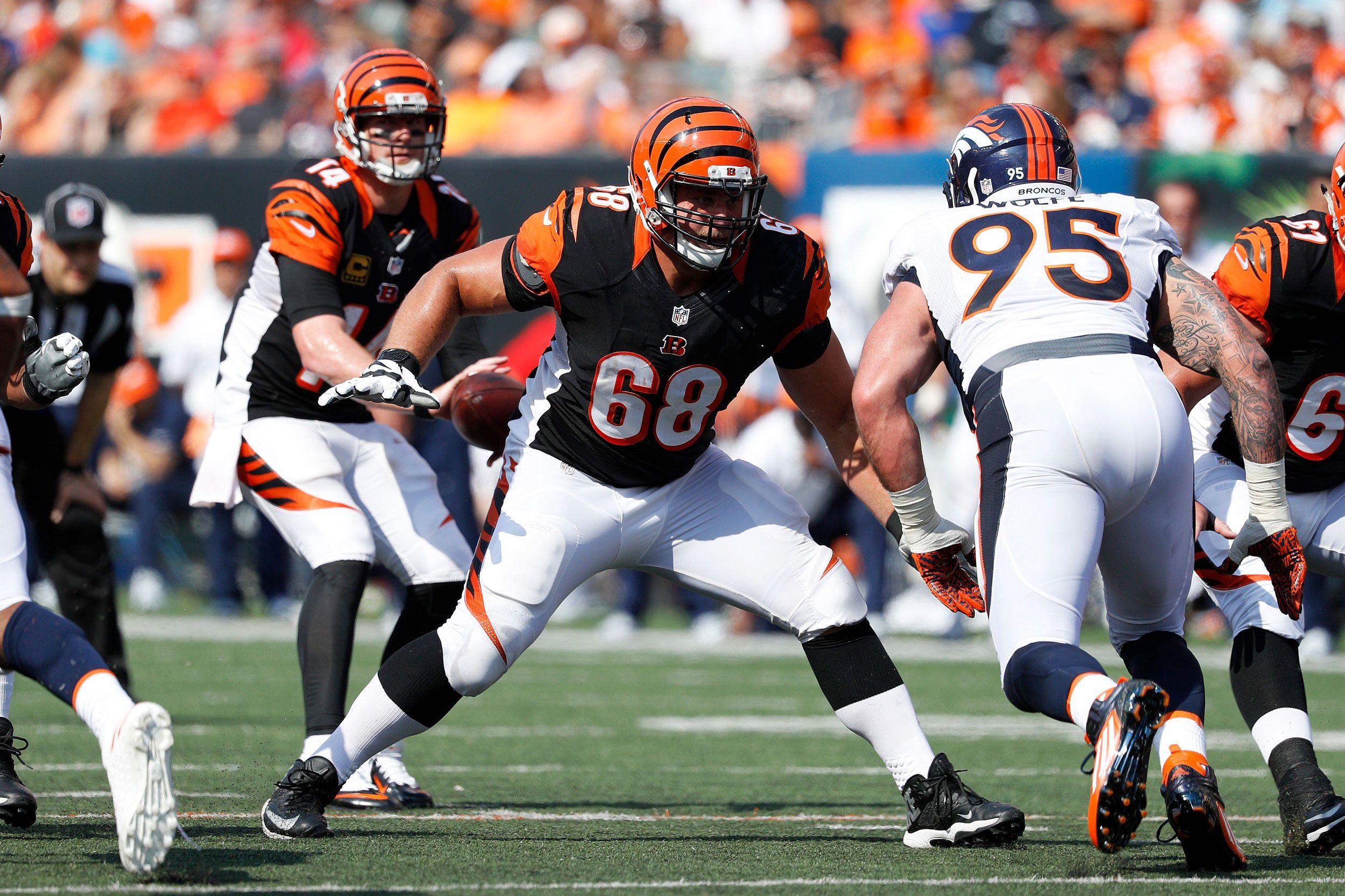
The players may change, but each year’s crop of NFL free agents shares patterns with the ones that have come before it. Bidding wars at certain positions (pass rusher and cornerback, mostly) will get out of control. Teams will chase after big-name veterans seeking one more payday, and the results will be mixed.
The 2017 free-agent class has plenty in common with the 2016 version, and trying to pinpoint which players are in familiar situations can be useful in identifying who has the best chance of being worth the massive price tag he’ll command in a few weeks. With that in mind, here are five guys with clear parallels to 2016 free agents.
Chandler Jones
2016 version: Olivier Vernon, Giants
Stylistically, these two don’t have much in common. The 6-foot-5 Jones is nearly three inches taller than Vernon, has less experience playing with his hand on the ground, and lacks a history of doing damage when lined up on the interior. But as with Vernon last offseason, Jones is the top edge rusher available in free agency, and his financial numbers are likely to blow up in a hurry.

The Giants signed Vernon to a five-year deal last March that included the most guaranteed money of any defensive end contract in football at the time. (He’s since been passed by the Jets’ Muhammad Wilkerson, who negotiated a deal later in 2016 after being slapped with the franchise tag.) Vernon’s huge payday carried an average salary of $17 million, and given the production Jones has had with both the Patriots and Cardinals, it’d be surprising if his deal wasn’t close to that mark.
Vernon was hardly considered a can’t-miss option last spring. His appeal was built mostly on a ridiculous second half to the 2015 campaign, when he piled up 64 pressures over Miami’s final 10 games. That — combined with a collection of other solid campaigns — was enough to lock teams such as the Giants and Jaguars in a high-priced battle for his services.
In terms of overall impact, Jones’s résumé as he enters free agency is considerably more impressive. He’s recorded double-digit sacks in three of his five NFL seasons, including 11 last year with Arizona. Still, he doesn’t come without concerns. With an imposing frame and 35.5-inch arms, Jones looks the part of a first-round pass rusher (which he was in 2012), but there are times when he disappears for extended stretches.
The Cardinals were willing to give up a second-round pick (and a guard they didn’t want) to acquire Jones in a trade last offseason, despite lacking a guarantee that he would stay in Arizona for more than one year. That should signify how much value he has. On the other hand, as the Patriots played new-contract musical chairs with all of their young players on defense, Jones was one of the two guys traded away when the music stopped. Given New England’s history of cutting bait with veterans at the right time, that may give some teams around the league pause.
Even if there are reasons for concern, though, they shouldn’t be enough to stop teams from making a significant push to sign Jones. Ten promising games from Vernon earned him a deal at the top of the market; Jones’s track record will almost certainly net him the same. Pass rushers in the modern NFL get paid. Jones will be no exception.
Calais Campbell
2016 version: Eric Weddle, Ravens
The Cardinals have a bunch of players set to hit the open market, including Jones, safety Tony Jefferson, and linebacker Kevin Minter. If they end up handing Jones a monster contract, there’s a chance that Campbell — who has been with the franchise since 2008 — could be left looking for a new team. The 6-foot-8, do-it-all defensive lineman will be 31 at the start of the 2017 season, and it’s possible that the combination of his age and what he’s likely to demand in free agency prices him out of Arizona, despite how valuable he’s been to the Cardinals’ run of great defenses.
Weddle was in a similar position last offseason, although there are no signs that Campbell’s potential exit from Arizona would be as acrimonious as Weddle’s from San Diego. By the time the 2015 season ended, it was clear that the veteran safety would move on from the Chargers. Baltimore signed him to a four-year deal with $13 million guaranteed, and he proved to be a bargain for the Ravens last fall.
Campbell likely won’t come quite as cheap. He still ranks among the most consistent defensive linemen in the league. His year-to-year statistics are almost identical. He’s had at least five (but no more than nine) sacks in every season since his sophomore effort in 2009, and he continues to be one of football’s toughest run defenders.
Weddle’s $6.5 million average salary over the life of his deal puts him just outside the top 10 at his position. Campbell should net a deal that puts him in a similar range among defensive linemen. The general appeal of both players is the same: In terms of what each could bring to a team in the first (and likely, second and third) season of a deal, few free agents are more attractive. Campbell has lined up in every spot along the line during his Cardinals tenure, and that scheme versatility should make him a fit for any team looking for a talent upgrade.
Kevin Zeitler
2016 version: Kelechi Osemele, Raiders
Zeitler’s teammate in Cincinnati, left tackle Andrew Whitworth, is the bigger name hitting free agency, and the 35-year-old could provide suitors with a similar veteran boost as Weddle and Campbell. Among the offensive linemen available this offseason, though, Zeitler is the real prize.

The 26-year-old former first-round pick will probably command the biggest deal of the free-agent guards (a solid group that also includes T.J. Lang and Larry Warford), and for good reason. He emerged as one of the league’s top players at the position with the Bengals and will play most of his next deal before his 30th birthday.
Plenty of highly drafted guards have cashed in over the past few years, either through extensions with the teams that drafted them (like the Bears’ Kyle Long and the Steelers’ David DeCastro) or through significant free-agent money after moving on (like Osemele and the Cardinals’ Mike Iupati). Zeitler will probably command something close to what Long and DeCastro got via their extensions: $10 million a year, with about $16 million to $18 million guaranteed. It wouldn’t be a shock to see a team in desperate need of line help fork over a contract closer to the market-setting one Osemele got from Oakland ($11.7 million annually, with $25.4 million guaranteed). Like Osemele, Zeitler is a proven commodity with a great pedigree, and the recent success of guards in free agency should only bolster his cause.
T.J. Lang
2016 version: Alex Mack, Falcons
This isn’t an apples-to-apples comparison due to the difference in positions, as Lang is a guard while Mack is a center. But there are elements to Mack’s impact in Atlanta that Lang would almost surely bring to whatever team signs him. He’s the type of veteran presence that organizations love having in their offensive line room.
A vocal leader since his early days as a starter in Green Bay, Lang would likely put his stamp on any unit that he’s a part of, and oh yeah, he’s a damn good player, too. As more defenses slide their best pass rushers inside in nickel and dime packages as a way to create mismatches with outmanned guards, Lang’s value only grows. His style as a pass protector is unique in how aggressive he can be on passing downs, and that’s turned him into one of the best pass-blocking guards in football. Combine that ability with the other factors he’ll bring to any roster, and it makes sense why a guy about to turn 30 should command a sizable contract.
Brandon Williams
2016 version: Damon Harrison, Giants
This comparison might be too obvious. Like Harrison, Williams has made his bones as a run-stuffing force in the middle of the defensive line. The thinking surrounding Harrison last offseason was that his limitations as a pass rusher might restrict the market for his services, but the Giants made it clear that one elite skill is enough to net guys like Harrison and Williams big money in free agency.
The Giants handed Harrison — a guy with 1.5 career sacks as he hit the market — a five-year deal with $24 million guaranteed. Even following some recent extensions, that’s good for ninth most in the league among defensive tackles. For Williams’s agent, that will surely be the starting point of any conversation. Williams’s play fell off a bit in Baltimore in 2016, but at his best, he’s able to transform a team’s entire run defense by himself. That’s comparable to what Harrison brought to the Giants last year, another point that should work in Williams’s favor when it comes time to negotiate.